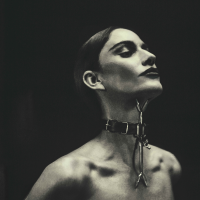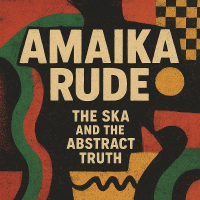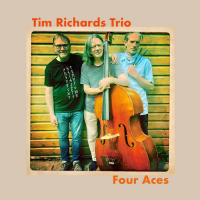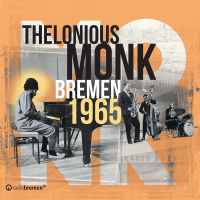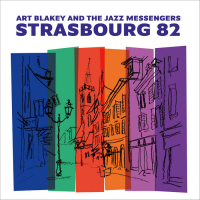Home » Jazz Articles » Album Review » Cat Power: Cat Power Sings Dylan: The 1966 Royal Albert ...
Cat Power: Cat Power Sings Dylan: The 1966 Royal Albert Hall Concert
The woman born Charlyn Marshall has traveled quite the arc of a thirty-plus year career, so perhaps covering the setlist of one of the Nobel Laureate's most famous concerts—albeit one mislabelled from the outset of its existence as a bootleg—is only a natural extension of her left-of-center artistic vision. But that hardly renders it any less laudable in either concept or execution: like the original performance, Cat Power and company's is divided into an acoustic and electric set which was actually recorded at the storied venue.
The vagaries by which Power has generated a discography including three albums of cover material no doubt aids in her interpretation(s) of Dylan. Accordingly, she both comprehends and communicates the surrealism of "Mr. Tambourine Man" and the emotionalism of "Just Like A Woman." She sounds confident in doing so too: on neither "She Belongs to Me" nor "Fourth Time Around" does she evince any lack of surety in her vocal delivery. Aiding in no small part to maintain the mood is an audience quietly restrained after its initial offering of a raucous greeting at the outset.
Power's solo musicianship directly reflects the range of material she chose, decisions as admirable as her resistance to succumb to any temptation to caricature her vocal delivery, even on "Just Like Tom Thumb's Blues." On the contrary, her elocution is as pointed as her harmonica playing during "It's All Over Now, Baby Blue," of which each element signals a personal grasp of the compositions.
It is hardly disparaging of her band to state that the electric portion of Sings Dylan is no more nor less moving than the preceding fifty minutes or so. But as with the Bard's own binary presentation with the Hawks, aka The Band, in 1966 (and to a lesser extent during their reunion tour of 1974), it is a distinction which represents liberating abandon, particularly as the second half begs for the volume to be turned way up.
The ensemble revels in its unity right from the barrelhouse beginning of "Tell Me Momma." Nudged along by the relatively light touch of drummer Josh Adams and bassist Erik Paparozzi, the cumulative momentum only grows, albeit imperceptibly, through the modified blues of "Baby Let Me Follow You Down" to the liberating shuffle of "Leopard-Skin Pill Box Hat."
Without much extended soloing, the septet's fairly quick progression through this succession of approximately three to six minute selections generates significant impact despite the seemingly casual manner of all involved. Little wonder, then, that the closing number, "Like A Rolling Stone" rings so true for Cat Power; it sounds like the final punctuation on an autobiography in song by proxy.
Loud and clear as that performance is, so too is the end result of the technical expertise Rob Schnapf brought to bear in recording and mixing the performance (for Mark Chalecki to master and Power to co-produce with Andrew Slater). The depth and balance of the sound mirrors the precise intermixing of Aaron Embry's piano and Jordan Summers' Hammond B3 organ with the acoustic and electric guitars of Henry Munson and Arsun Sorrenti.
The dark brown color scheme of the package's cover graphics belies the near kaleidoscopic palette of musical tones within. Yet even that marked contrast is not as striking as the portrait of the artist on the front cover; the expression on the woman's face hints at gratification from a job well done, but also hearkens quite clearly to these evocative words written by the object of her admiration in "Visions of Johanna:" 'the ghost of electricity howls in the bones of her face.'
Seeing the lyrics to the songs printed within the enclosed sixteen-page booklet also reaffirms the impression of this project's imposing scope left by the panoramic gatefold shot of the venue on the inside sleeve. The vibrancy and poise of Cat Power as she Sings Dylan in such empathetic company suggests The 1966 Royal Albert Hall Concert is as good a point as any to begin (or simply continue) appreciating its subject's genius.
Track Listing
She Belongs to Me; Fourth Time Around; Visions of Johanna; It's All Over Now, Baby Blue; Desolation Row; Just Like a Woman; Mr. Tambourine Man; Tell Me, Momma; I Don't Believe You (She Acts Like We Never Have Met); Baby, Let Me Follow You Down; Just Like Tom Thumb's Blues; Leopard-Skin Pill-Box Hat; One Too Many Mornings; Ballad of a Thin Man; Like a Rolling Stone..
Personnel
Cat Power
vocalsHenry Munson
guitar, acousticArsun Sorrenti
guitar, electricJordan Summers
organ, Hammond B3Aaron Embry
pianoErik Paparazzi
bass, electricJosh Adams
drumsAdditional Instrumentation
Cat Power: acoustic guitar, harmonica; Henry Munson: electric guitar; Aaron Embry: harmonica, Wurlitzer electric Piano.
Album information
Title: Cat Power Sings Dylan: The 1966 Royal Albert Hall Concert | Year Released: 2023 | Record Label: Domino Records (US)
Tags
PREVIOUS / NEXT
Cat Power Concerts
Support All About Jazz
 All About Jazz has been a pillar of jazz since 1995, championing it as an art form and, more importantly, supporting the musicians who make it. Our enduring commitment has made "AAJ" one of the most culturally important websites of its kind, read by hundreds of thousands of fans, musicians and industry figures every month.
All About Jazz has been a pillar of jazz since 1995, championing it as an art form and, more importantly, supporting the musicians who make it. Our enduring commitment has made "AAJ" one of the most culturally important websites of its kind, read by hundreds of thousands of fans, musicians and industry figures every month.









